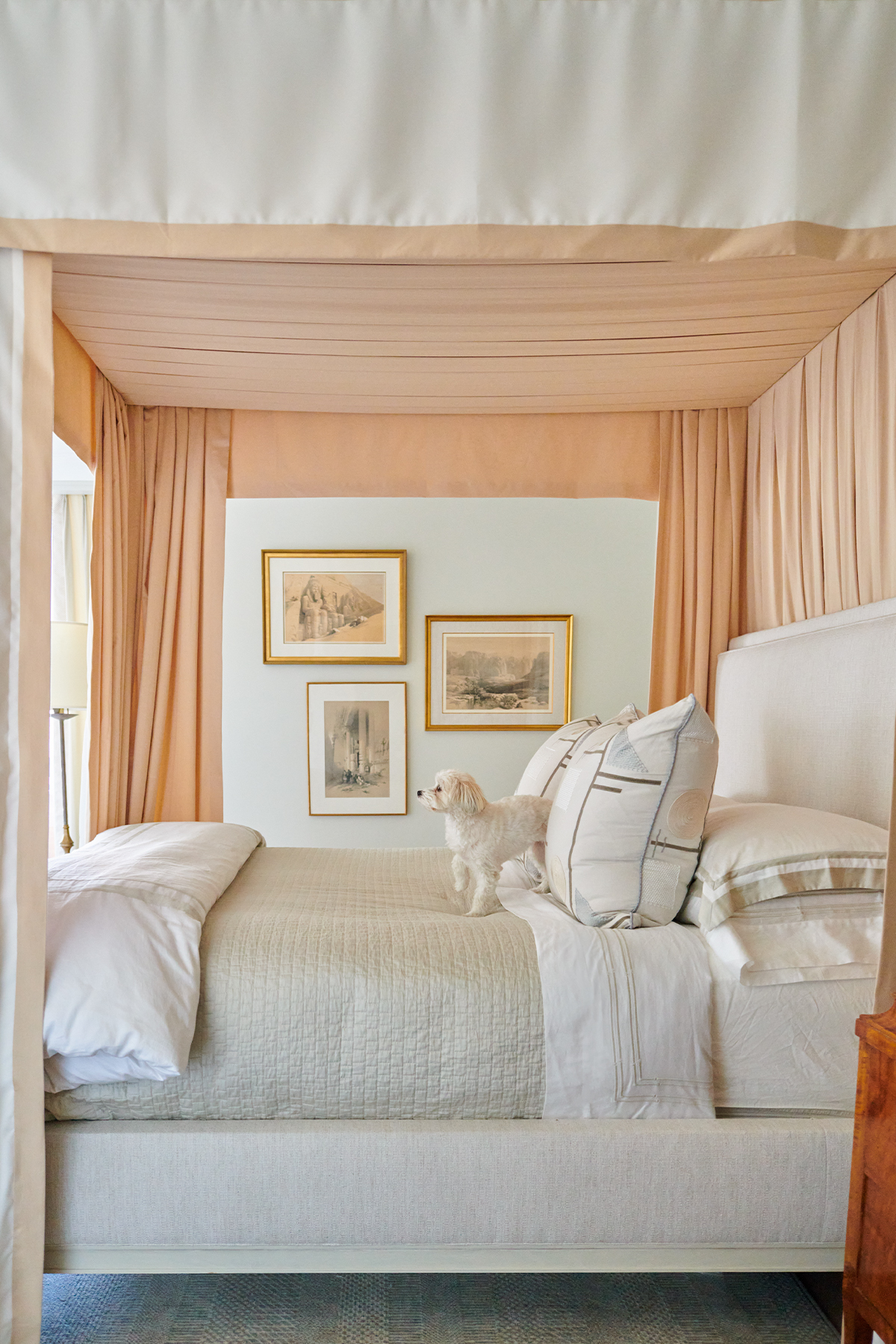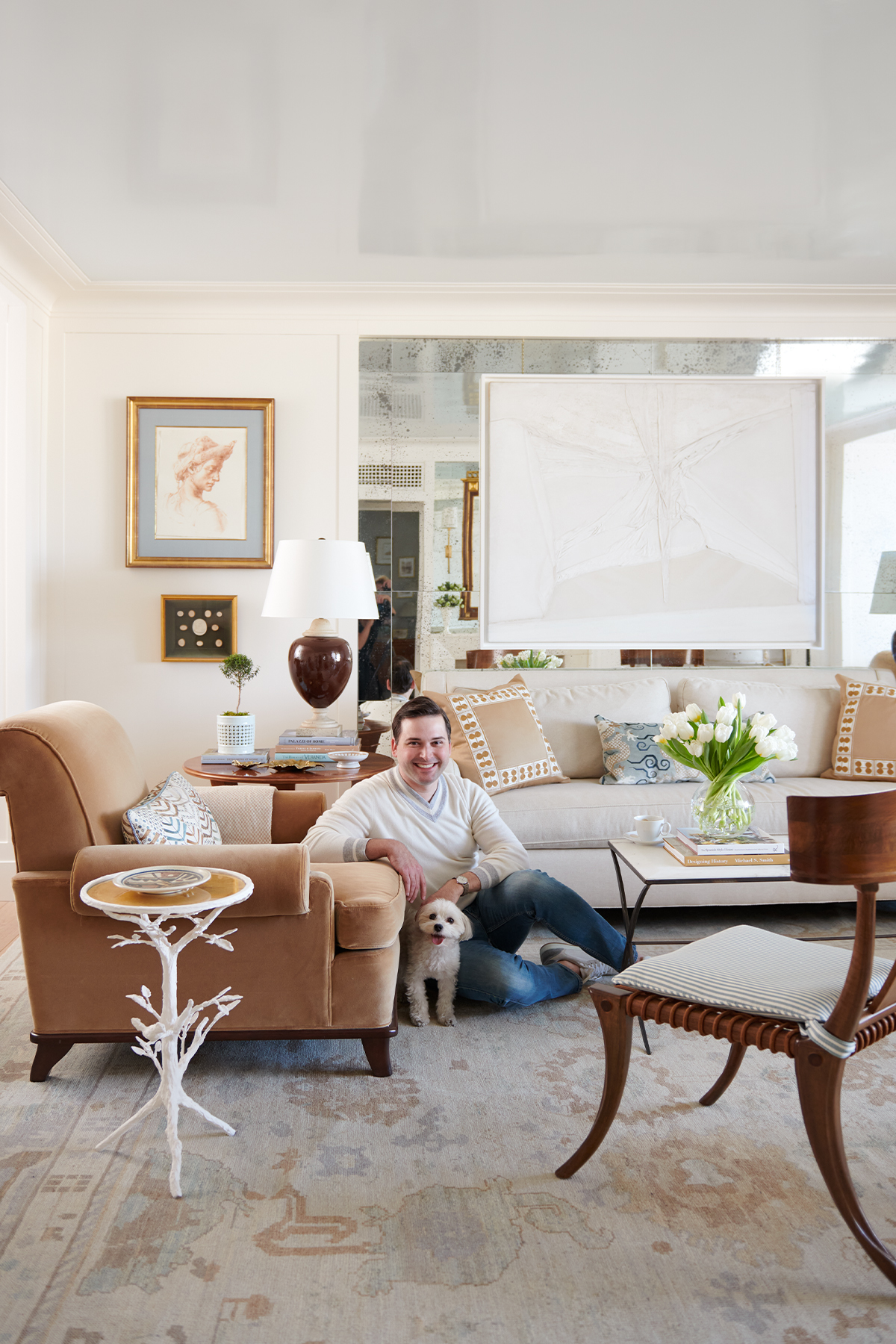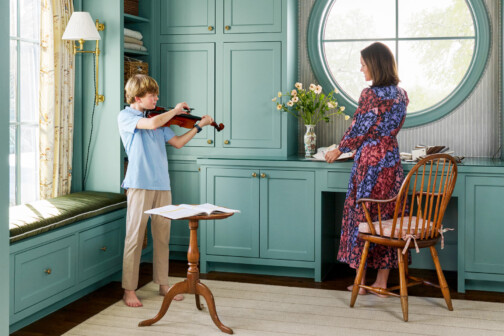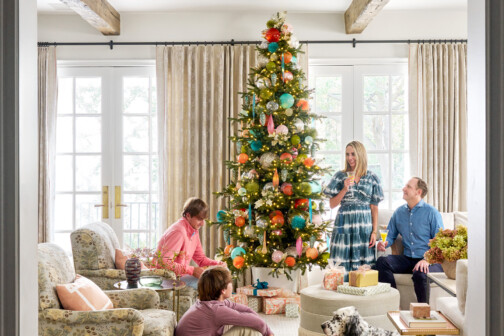Up above Turtle Creek in a midcentury high-rise, interior designer Josh Pickering and husband Daniel Heath have taken their time creating their dream home. The couple purchased the unit in 2016 and “renovated everything but the kitchen and bath.” Despite being a one-bedroom apartment, Pickering says the primary rooms are quite large, giving him room to play and experiment with the space. Still, that doesn’t mean the designer can’t play tricks on the eye. With limited natural daylight, he’s used reflective surfaces such as antique mirrors to open up spaces, and intentional design choices to draw sightlines upward, like exaggerated crown molding.
Q&A with Josh Pickering
What techniques do you employ when designing for small spaces?
“Every item matters! I don’t do as much high-low design in a smaller space as I would in a large house. Smaller spaces should be more of a jewel box where every detail is completely thought out and pieces are
more special.”
And with space as such a valuable commodity, Pickering waits to purchase the right piece, rather than fill his home with temporary placeholders—making his space less of a mix of high and low and more of a studied acquisition. “Every purchase counts,” he says. “We’ve gradually evolved over the past six years.” Yet even with careful purchases, Pickering says flexibility, practicality, and comfort are key: “If we have a big dinner party, we move the furniture around so we can get a larger table in. We built in this flexibility so that we can live big or small in the same space.”

Surfaces, too, must serve a variety of functions. “It’s the same when I design for a larger house, but more concentrated,” he says. “It’s all the same tips, but more [scrutiny].”
Get the AtHome Newsletter
Author








